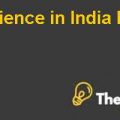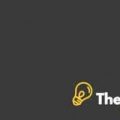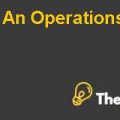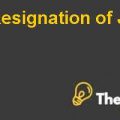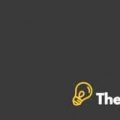
Problems Analysis
The TeleStroke System framework carries many issues that are contributing towards the complexities in the system. Firstly, the system consumes a lot of time and effort in managing a diverse telemedicine program, whereas, through this diversion the company could lose its focus in providing high quality services in its current running services. The company is currently in a state of financial stability and also maintains self-financing system, while initiating another program for the hospital would not contribute towards cost effectiveness of its systems. Moreover, the company is in the state of paradox as it could not measure the opportunity cost for either making investment in the new system or to just remain focus on simple TeleStroke. The Mass General business strategy of the company entails to an old IT function and framework which could be considered as inappropriate according to the current environment. The treatment data for the patients and blood group data were not maintained successfully and were maintained in other database. The data of customers were also not maintained appropriately as there were flaws in the clinical system. Lastly, since the concept of Telemedicine does not involve face to face interaction of patients and medical staff, therefore, it is also a concern for the company because the entire emphasis is on virtual meetings which might not create value for its patients as it would have created through face to face contact.
Firm-Based Value Chain Model
The Porter’s firm based value chain model determines the value created by the organization for its customers by the products or services offered. However, the model also pertains to the change of the business input to the business output in a pattern or through a certain process which creates a higher value as it tends to be greater than the cost which has been incurred in processing the product. The particular concept has been devised by Michael Porter in the year 1985, as the concept had first emerged in the business management studies (Sekhar, 2010). The aim of the particular model is to first create and then to sustain a competitive performance for the company. The model is divided into two activities which include primary activities and supporting activities. The primary activities are included from the inbound logistics to the services or products provided to the end consumer which may involve marketing and promotional techniques. Furthermore, the supporting activities of the company include the infrastructure of the firm, human resource practices, the technological development, and the procurement of the raw materials (Sekhar, 2010).
Porter’s Value Chain Model can impact the decision making of a firm as it identifies the major practices offered by the company which relates to the inner business practices to the outer business practices. The governing bodies of the company may recognize the flaws and the consumption for each activity alongside the quality of those practices to determine if a right value is created. If the company has failed to enhance value, then the company shall refer back to the model and can identity where it lacks certain capabilities (Sekhar, 2010).
Model Application at Case Company
There are five disciplinary treatment centers which are formed by the company in order to perform research in various diseases which include heart diseases, transplantation, digestive disorders, and cancer. Therefore, combining these activities along with the expertise provided by medical staff in caring and giving attention to the patients creates value amongst the entire business practices of the organization. For children, there is a special treatment procedure by pediatric health care services where different types of treatment are being provided from a low level treatment to a high level treatment. The low level and the high level treatment differs on the basis of severity of the disease. The organizational structure which is applied by the organization is decentralized where the decision making power rests with the general staff. In this case, the medical staff has the decision making power along with the structure of free flow of information. The leadership team of the company is well-directed to achieve their working standards and to maintain quality services according to the goals of the organization (Buzug, Handels, & Holz, 2000).
A learning culture has been promoted within the organization where every individual is trained to lead the organization and the team while they are also exposed to diverse teams which allow the company to ensure different solutions to the problems while maintaining the quality of the services provided to patients. The value creation in the primary activities of the firm initiates from the arriving of the patients. The second step involves the diagnosis of the problem, disease, or a disability amongst patients.......................................
This is just a sample partial case solution. Please place the order on the website to order your own originally done case solution.

